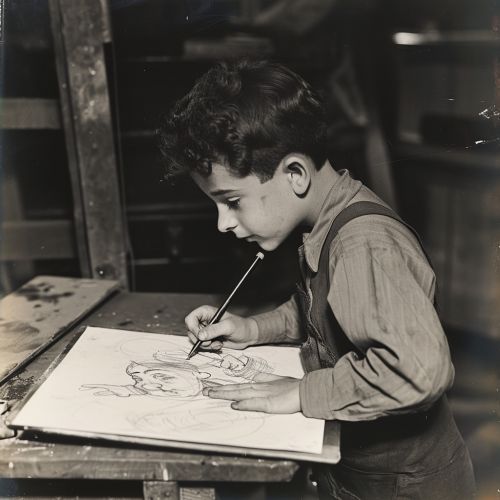Ub Iwerks
Early Life and Education
Ub Iwerks, born Ubbe Eert Iwerks on March 24, 1901, in Kansas City, Missouri, was the son of Dutch immigrants. His father, Eert Ubbe Iwerks, was a barber, and his mother, Geertje van den Berg, was a housewife. Iwerks showed an early interest in art and began drawing cartoons at a young age. He attended the Westport High School, where he met his lifelong friend and future business partner, Walt Disney.


Career
Iwerks began his career as a commercial artist in Kansas City, where he met Walt Disney. The two formed a short-lived company, Iwerks-Disney Commercial Artists, in 1920. However, the venture was unsuccessful, and they both joined the Kansas City Film Ad Company, where they made commercials based on cutout animation.
In 1923, Disney moved to Hollywood and started the Disney Brothers Studio, later known as the Walt Disney Company. He invited Iwerks to join him, and together they created Oswald the Lucky Rabbit, their first successful character. However, they lost the rights to Oswald due to a contractual dispute with their distributor, Universal.
Creation of Mickey Mouse
Following the loss of Oswald, Iwerks and Disney needed a new character. Iwerks proposed a mouse character named Mortimer, which Disney later renamed Mickey Mouse. Iwerks was responsible for the design and animation of Mickey Mouse in the first few films, including "Steamboat Willie," which was the first synchronized sound cartoon.


Iwerks Studio
In 1930, Iwerks left Disney to start his own studio, the Iwerks Studio, also known as Celebrity Pictures. He created several characters, including Flip the Frog and Willie Whopper. However, the studio was not financially successful, and Iwerks returned to Disney in 1940.
Later Career and Innovations
Upon his return to Disney, Iwerks worked in the technical and special effects department, where he made significant contributions. He developed a process for combining live-action and animated characters, used in films like "The Three Caballeros" and "Song of the South." He also invented the multiplane camera, which added depth to animated films, used in classics like "Snow White and the Seven Dwarfs" and "Bambi."


Death and Legacy
Iwerks passed away on July 7, 1971, in Burbank, California. His legacy lives on in the iconic character of Mickey Mouse and his contributions to animation technology. He was posthumously awarded the Winsor McCay Award in 1985 for his lifetime contributions to animation.
